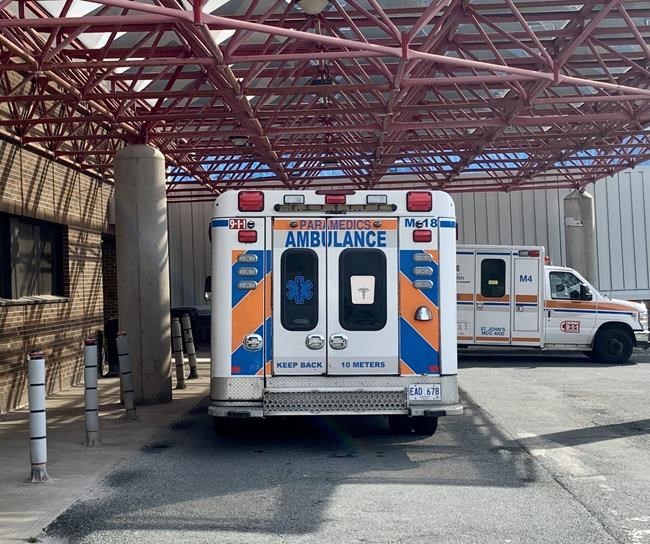ST. JOHN'S, N.L. — The premier of Newfoundland and Labrador called Saturday for an emergency debate about an ongoing ambulance strike which some mayors say is already affecting patients.
In a news release Saturday evening, Premier Andrew Furey said he’d asked the appropriate officials to reconvene the legislature on Monday to discuss legislative changes that would make private ambulance services essential.
“Due to the urgent and critical nature of the situation created by this strike action and labour dispute, it raises serious concerns for the safety and well-being of residents of Newfoundland and Labrador,” Furey said.
About 120 workers with seven private ambulance services owned by Fewer's Ambulance Service walked off the job early Friday afternoon, seeking higher wages and a better pension plan. The company is funded for its services by the provincial government.
Communities in Newfoundland immediately affected by the strike action include Stephenville, Fogo, Gambo, Bonavista, Conception Bay South, Holyrood and Trepassey.
Hubert Dawe, a leader with the Teamsters Local 855 union, said Friday that he's been asking the provincial government for years to make private ambulance services essential. The move would eliminate their right to strike, but it would mean wages and working conditions for private paramedics would be decided by an independent arbitrator rather than the company owner.
Furey announced the emergency debate as mayors of two Newfoundland towns said the strike only heightened anxieties amid a roaring winter storm that began on Friday night.
John Norman, the mayor of Bonavista, said a patient at the town's health centre with a "severe, acute" health condition waited an extra 90 minutes Friday for an ambulance to transfer them to a larger hospital where they could be treated by specialists.
"That is just, I think, the tip of the iceberg of where this could go," Norman said in an interview Saturday. "It is just another indicator of, frankly, the absolute disaster that health care in much of Newfoundland is in."
The town of Bonavista is home to about 3,100 people as well as a busy regional health centre whose emergency department has also been plagued by closures and doctor shortages. In good weather, it takes about 90 minutes to get to the next nearest hospital in Clarenville, Norman said. In a winter storm, it could take two hours.
As of late Saturday morning, roughly 10 centimetres of snow had already fallen in Bonavista. The snow continued throughout the day, and the Bonavista Peninsula remained under an Environment Canada winter storm warning on Saturday evening, with another 10 centimetres in the forecast.
Across Bonavista Bay, New-Wes-Valley Mayor Michael Tiller said the strike was putting a strain on his community. Tiller is a paramedic, though he is not among those who are on strike. He was quick to voice his support for their action.
Tiller said he and his team responded to a call on Friday night in an area normally served by striking workers. The extra distance meant the patient waited an additional 20 minutes for the ambulance to arrive. He said a volunteer fire fighter administered oxygen, which kept the patient stable.
"If both of our ambulances in New-Wes-Valley are gone responding to emergencies in other areas, we could very well in this area be facing a wait of an hour and a half for an ambulance, and that's not a stretch," Tiller said in an interview Saturday.
Doctor shortages have forced New-Wes-Valley's health centre to close for roughly 13 days in the past month, according to news releases from the regional health authority. The next closest emergency room is in Gander, which is about 130 kilometres away.
"Our region has been worried for quite some time that there's going to be a tragic outcome because our hospital's not open or there's a delay, even in getting a treatment or a follow-up appointment because there's no doctor," Tiller said.
This report by The Canadian Press was first published Jan. 21, 2023.
Sarah Smellie, The Canadian Press



